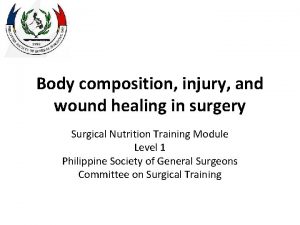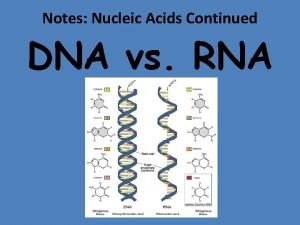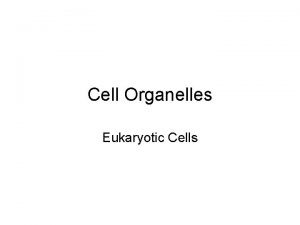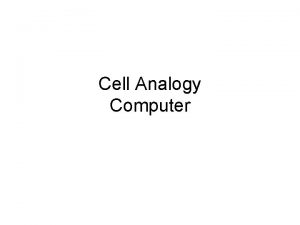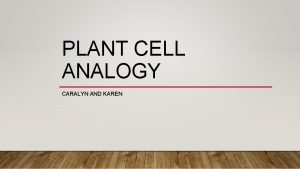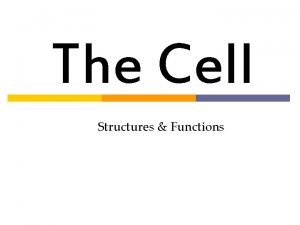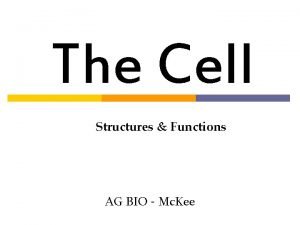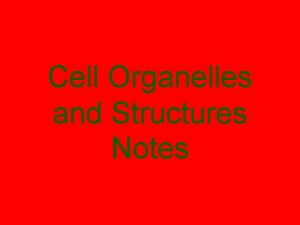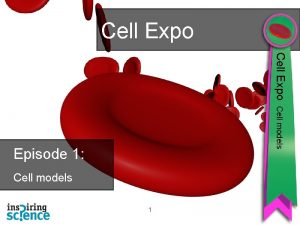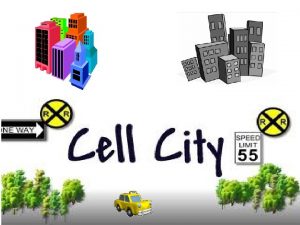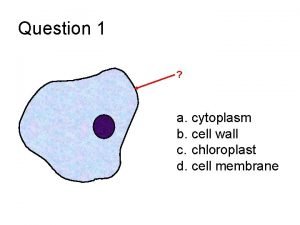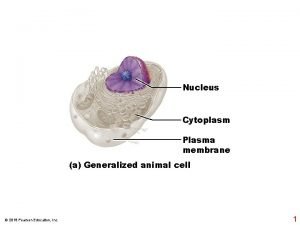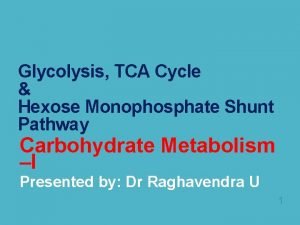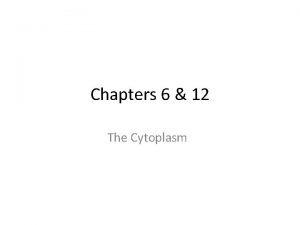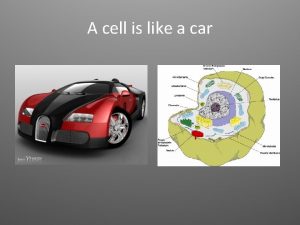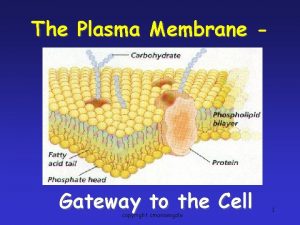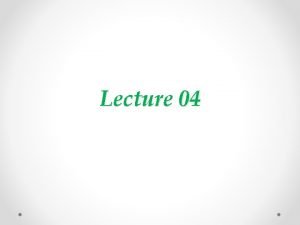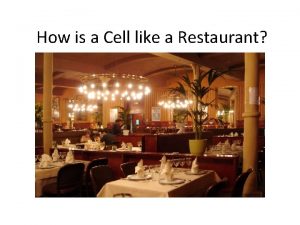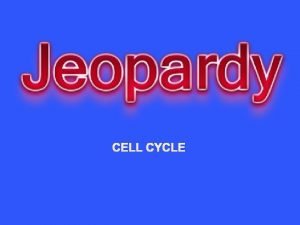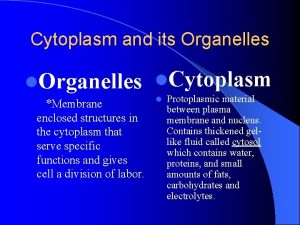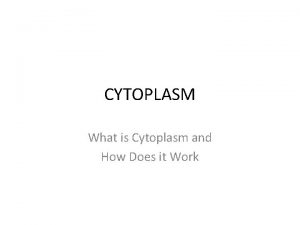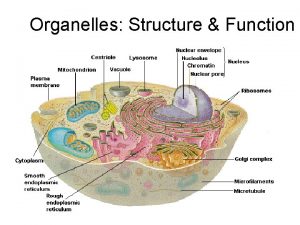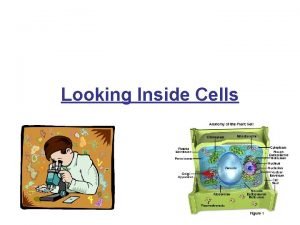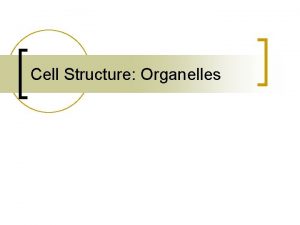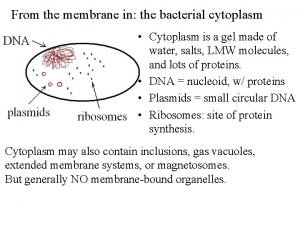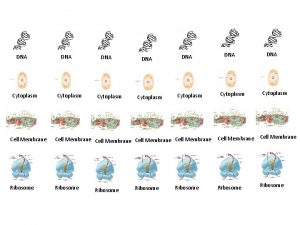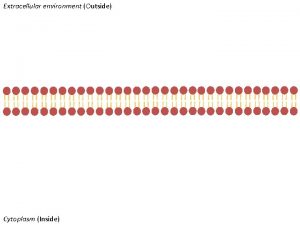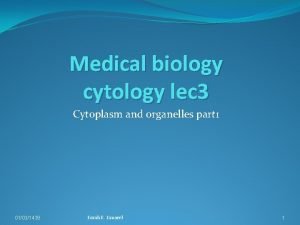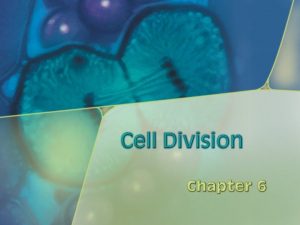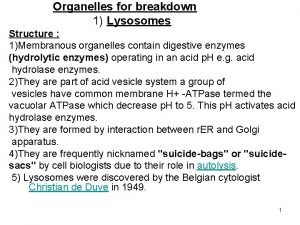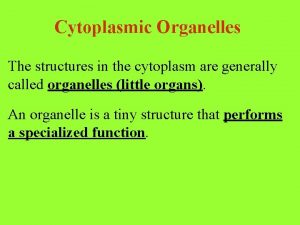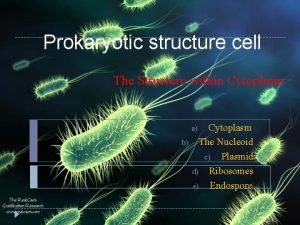Structure and Organelles Cytoplasm The environment inside the






















- Slides: 22

Structure and Organelles

Cytoplasm • The environment inside the plasma membrane is a semifluid material called the cytoplasm. • In a Prokaryotic cell, all of the chemical processes take place directly in the cytoplasm. • Eukaryotic cells perform these processes within organelles in their cytoplasm. • Organelles do not float freely in a cell.

Cytoskeleton • The cytoskeleton is a supporting network of long, thin protein fibers that form a framework for the cell and provide an anchor for the organelles inside the cells. • It also has a function in cell movement and other cellular activities. • The cytoskeleton is made of substructures called microtubules and microfilaments. • Microtubules are long, hollow protein cylinders that form a rigid skeleton for the cell and assist in moving substances within the cell. • Microfilaments are thin protein threads that help give the cell shape and enable the entire cell or parts of the cell to move.

Eukaryotic Cell Structures • Membrane-bound organelles make it possible for different chemical processes to take place at the same time in different parts of the cytoplasm. • Organelles carry out essential cell processes, such as protein synthesis, energy transformation, digestion of food, excretion of wastes and cell division. • Each organelle has a unique structure and function

The Nucleus • The Nucleus contains most of the cell’s DNA, which stores information used to make proteins for cell growth, function and reproduction. • The Nucleus is surrounded by a double membrane called the nuclear envelope, which has large pores to allow larger-sized substances to move in and out of the nucleus. • Within the nucleus is the site of ribosome production, called the nucleolus.

Ribosomes • Ribosomes are the organelles that help to manufacture proteins. • They are made of RNA and protein and are not bound by a membrane. • Some ribosomes float freely in the cytoplasm and others are bound to the endoplasmic reticulum.

Endoplasmic Reticulum • The endoplasmic reticulum (ER) is a membrane system of folded sacs and interconnected channels that serve as the site for protein and lipid synthesis. • The area where the ribosomes are attached is called the Rough Endoplasmic Reticulum. • The area where the ribosomes are NOT attached is called the Smooth Endoplasmic Reticulum.

Golgi Apparatus • After proteins are made in the ER, some are transferred to the Golgi Apparatus. • The Golgi Apparatus is a flattened stack of membranes that modifies, sorts, and packages proteins into sacs called vesicles. • Vesicles then fuse with the cell’s plasma membrane to release proteins to the environment outside of the cell.

Vacuoles and Lysosomes • Membrane bound vesicles, called vacuoles, are used to temporarily store materials (such as food, enzymes, etc. ) needed by the cell. • Lysosomes are vesicles that contain substances that digest excess or worn-out organelles and food particles. • They also digest bacteria and viruses that have entered the cell.

Centrioles • Groups of microtubules form centrioles which function during cell division. They are located near the nucleus of animal cells in the cytoplasm.

Mitochondria • Mitochondria convert fuel particles (mostly sugar) into usable energy. • They have an inner and outer membrane and mitochondria are often referred to as the “powerhouses” of cells.

Chloroplasts • Plant cells have chloroplasts which capture light energy and convert it to chemical energy through a process called photosynthesis. • Inside the inner membrane of the chloroplasts, there are many disk-shaped compartments called thylakoids. It is there that energy from the sun is trapped by a pigment called chlorophyll. • Chlorophyll gives plants their green color.

Cell Wall • The Cell Wall is a thick, rigid mesh of fibers that surrounds the plasma membrane of plant cells, protects the cell and gives it support. • Plant cell walls are made of cellulose, which gives the cell walls their inflexible characteristics.

Cilia and Flagella • Cilia are short, numerous projections that look like hairs. Their motion is similar to the motion of oars in a rowboat. • Flagella are longer and less numerous than cilia. These projections move in a whip-like motion.

Cellular Transport

Diffusion • Diffusion is the net movement of particles from an area where there are many particles of the substance to an area where there are fewer particles of the substance. • The amount of substance in a particular area is called concentration. • Substances diffuse form areas of high concentration to low concentration. • When concentration is equal in both areas, and there is continuous movement of particles but no overall change in concentration, this is called dynamic equilibrium.

Factors that Affect Diffusion • Three main factors affect the rate of diffusion: concentration, temperature and pressure. • When concentration is high, diffusion occurs more quickly because there are more particles that collide. • When temperature or pressure increases, the number of collisions increases, therefore the rate of diffusion increases. • Water can diffuse across the plasma membrane but most other substances cannot.

Facilitated Diffusion • Facilitated Diffusion uses transport proteins to move other ions and small molecules across the plasma membrane. • A channel protein opens and closes to allow the substance to diffuse through the plasma membrane. • A carrier protein changes its shape as the diffusion occurs to help move the particle through the membrane. • Diffusion of water and facilitated diffusion of other substances require no additional input of energy because the particles are moving from an area of high concentration to an area of lower concentration. THIS IS ALSO KNOWN AS PASSIVE TRANSPORT.

Osmosis • Osmosis is the diffusion of water across a selectively permeable membrane. • Regulating the movement of water across the membrane is an important factor in maintaining homeostasis within the cell. • A solute is a substance dissolved in a solvent, such as ions, sugars, proteins and other substances.

Types of Solutions • When a cell is in a solution that has the same concentration of water and solutes as its cytoplasm, the cell is said to be in an isotonic solution. • In an isotonic solution, the cell is at equilibrium and there is no net movement of water. The cells retain their normal shape. • If a cell is in a solution that has a lower concentration of solute, the cell is said to be in a hypotonic solution. There is more water outside of the cell than inside. • Because of osmosis, the net movement of water through the plasma membrane is into the cell which causes the cell to swell (and sometimes burst). • When a cell is places in a hypertonic solution, the concentration of the solute outside of the cell is higher than i is inside. • The net movement of water is out of the cell which causes the cell to shrink.

Active Transport • Active Transport is the movement of substances across the plasma membrane against a concentration which requires energy. • Active Transport occurs with the aids of carrier proteins, commonly called pumps. • Some pumps move one type of substance in only one direction, while others move two substances either across the membrane in the same direction or in opposite directions. • Active transport helps maintain homeostasis.

Transport of Large Particles • Some substances are too large to move through the plasma membrane by diffusion or transport proteins and must get inside the cell by a different process. • Endocytosis is the process by which a cell surrounds a substance in the outside environment, enclosing the substance in a portion of the plasma membrane. The membrane then pinches off and leaves the substance inside the cell. • Exocytosis is the secretion of materials at the plasma membrane. Cells use exocytosis to expel wastes and to secrete substances produced by the cell.
 Cytoplasm and its organelles
Cytoplasm and its organelles Tacaccttggcgacgact
Tacaccttggcgacgact Dna vs rna worksheet answer key
Dna vs rna worksheet answer key Plant cell parts and functions
Plant cell parts and functions Cytoplasm organelle
Cytoplasm organelle Structure a
Structure a Cell computer analogy
Cell computer analogy Endoplasmic reticulum analogy
Endoplasmic reticulum analogy What does a cytoplasm remind you of
What does a cytoplasm remind you of What does a cytoplasm remind you of
What does a cytoplasm remind you of Cytoplasm nickname
Cytoplasm nickname Red blood cell cytoplasm
Red blood cell cytoplasm Cell city analogy answer key
Cell city analogy answer key Cytoplasm
Cytoplasm Generalized animal cell
Generalized animal cell Significance of glycolysis
Significance of glycolysis Cytoplasm
Cytoplasm Endoplasmic reticulum of a car
Endoplasmic reticulum of a car Cytoplasm definition
Cytoplasm definition Cytoplasm
Cytoplasm The cell restaurant
The cell restaurant Environment of business finance
Environment of business finance During interphase a cell grows, duplicates organelles, and
During interphase a cell grows, duplicates organelles, and
